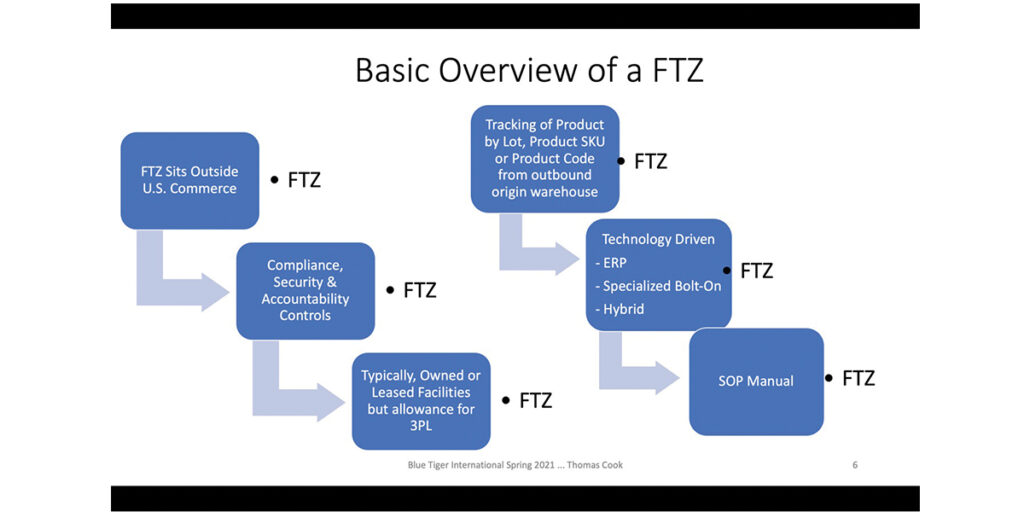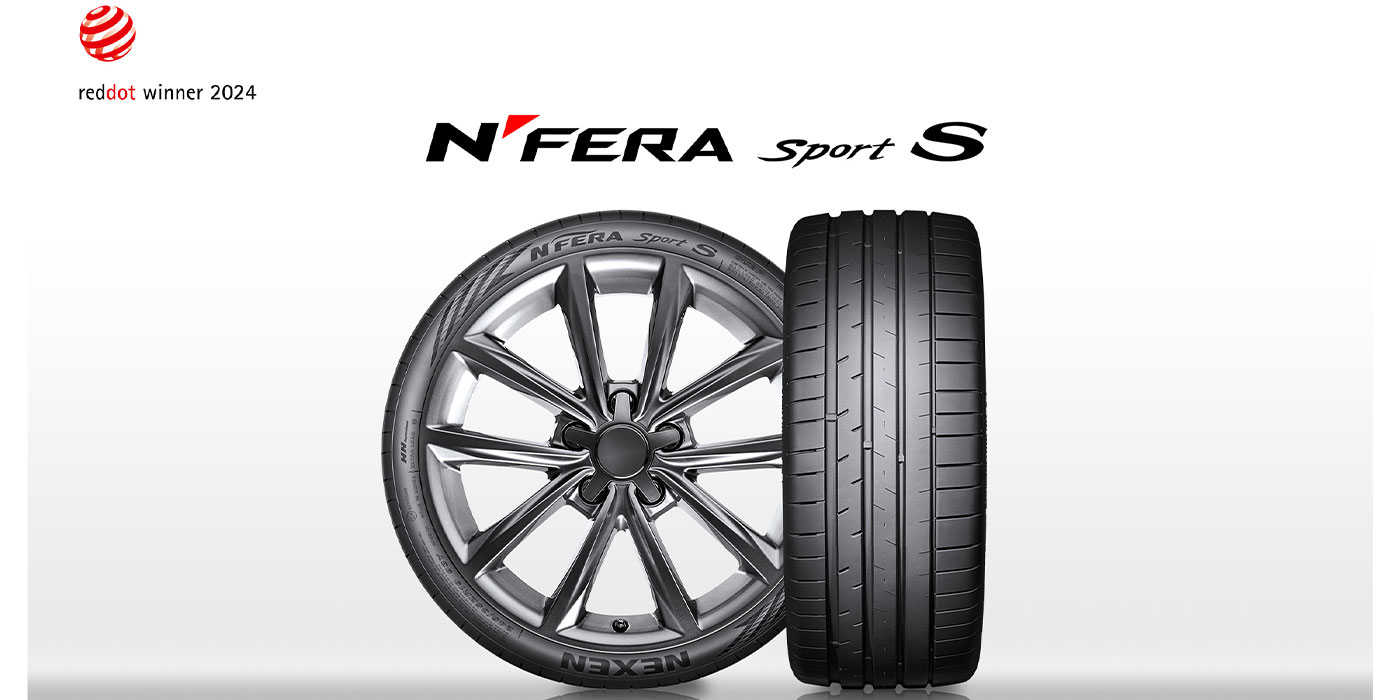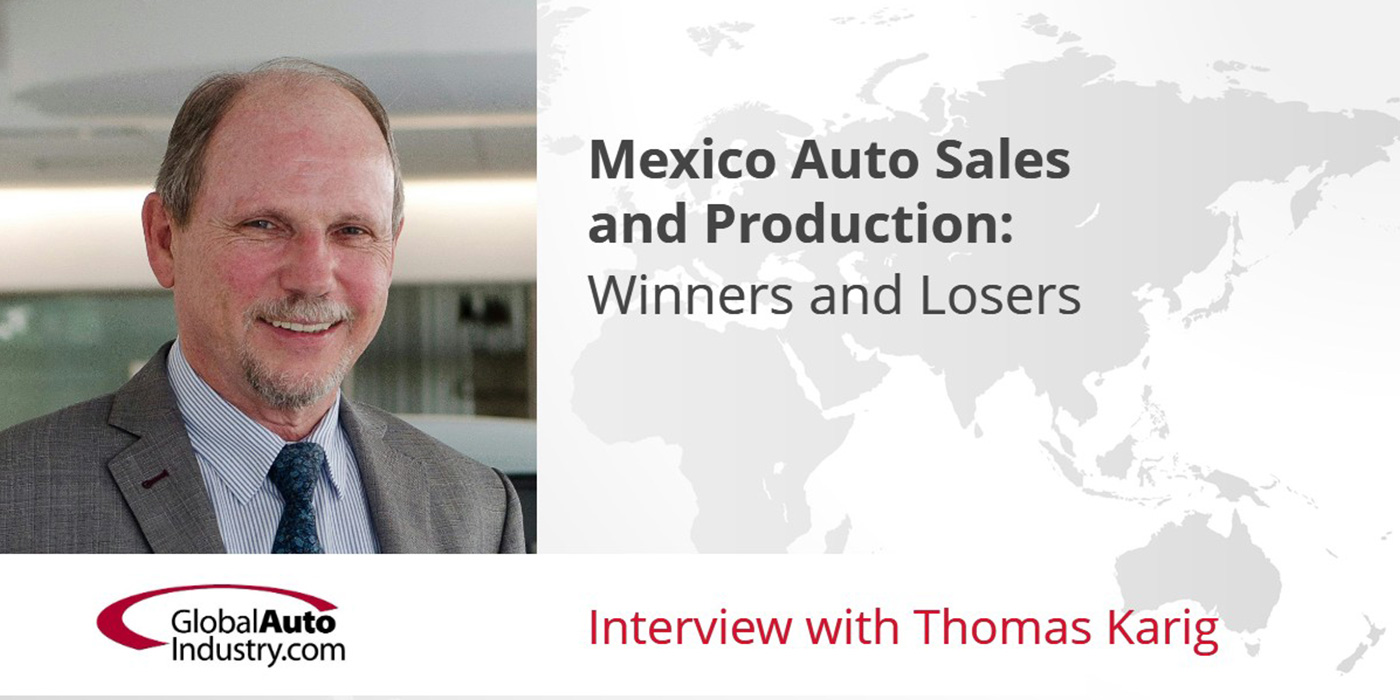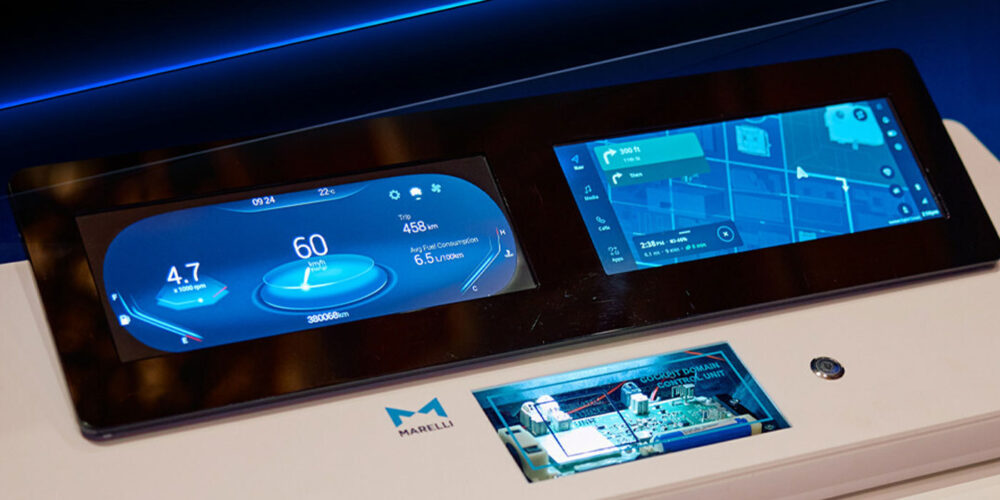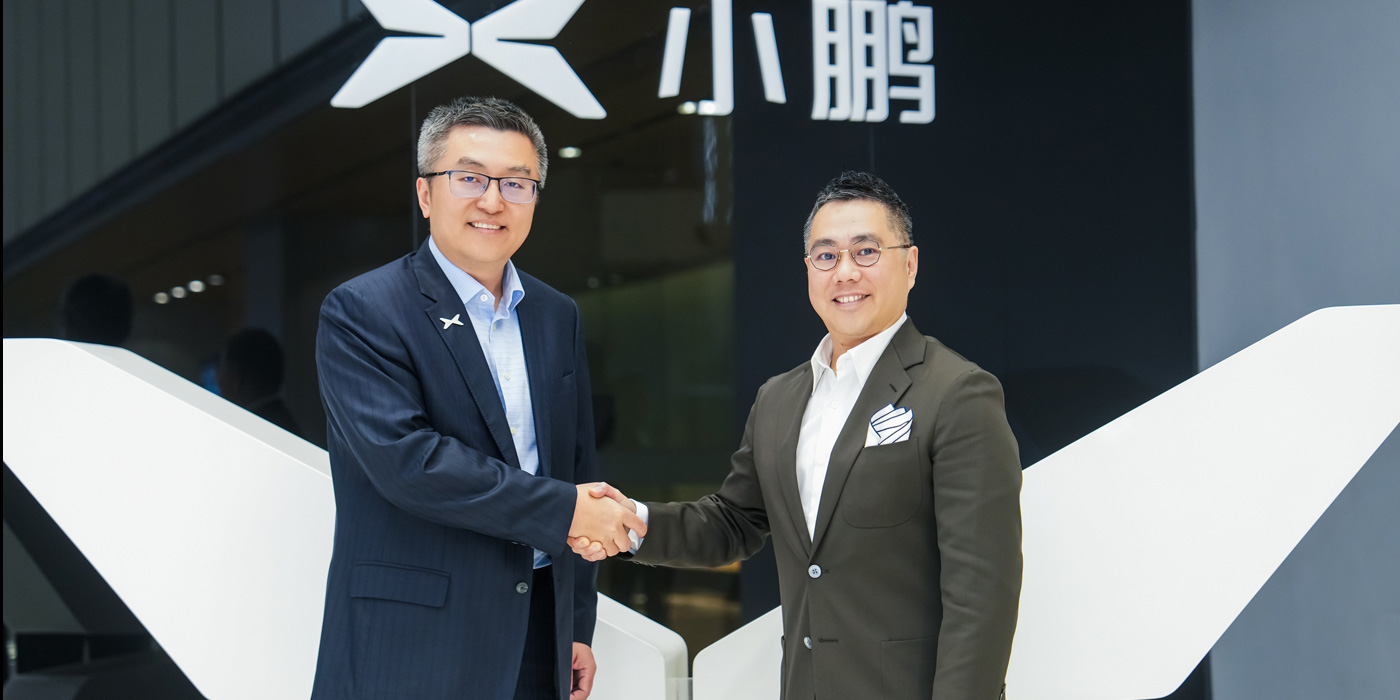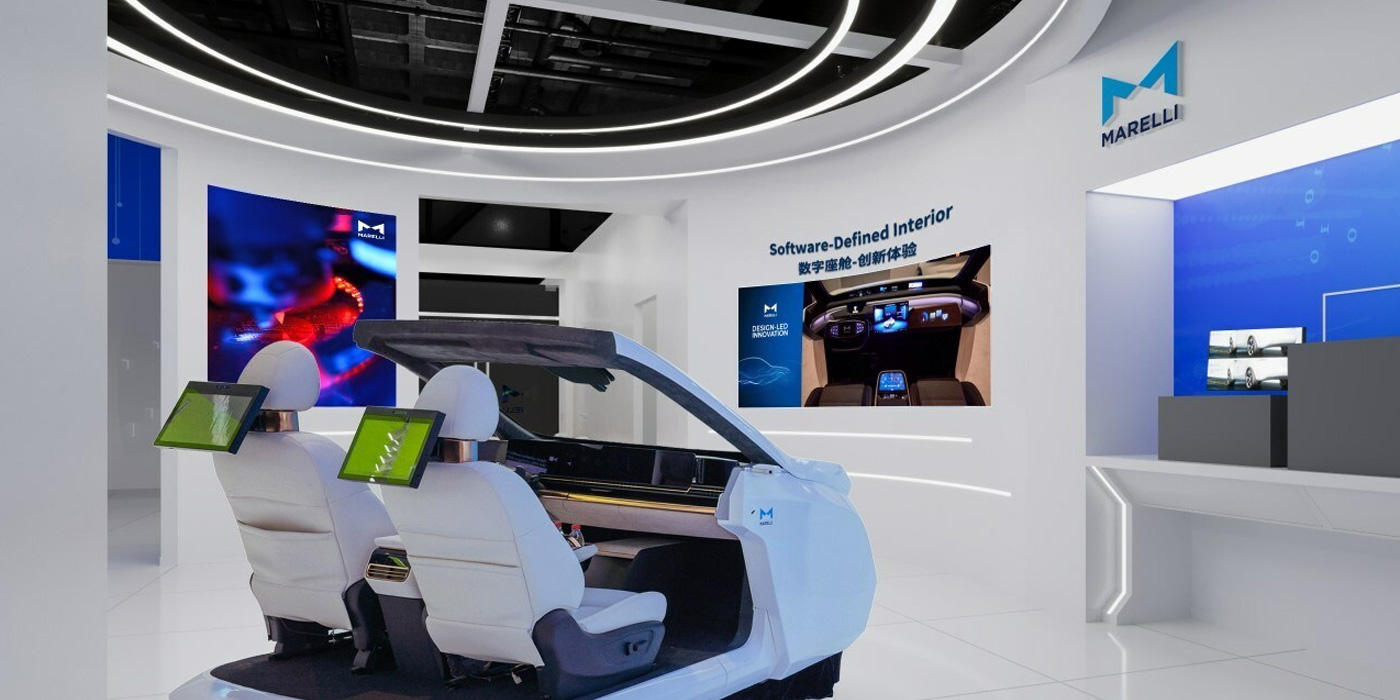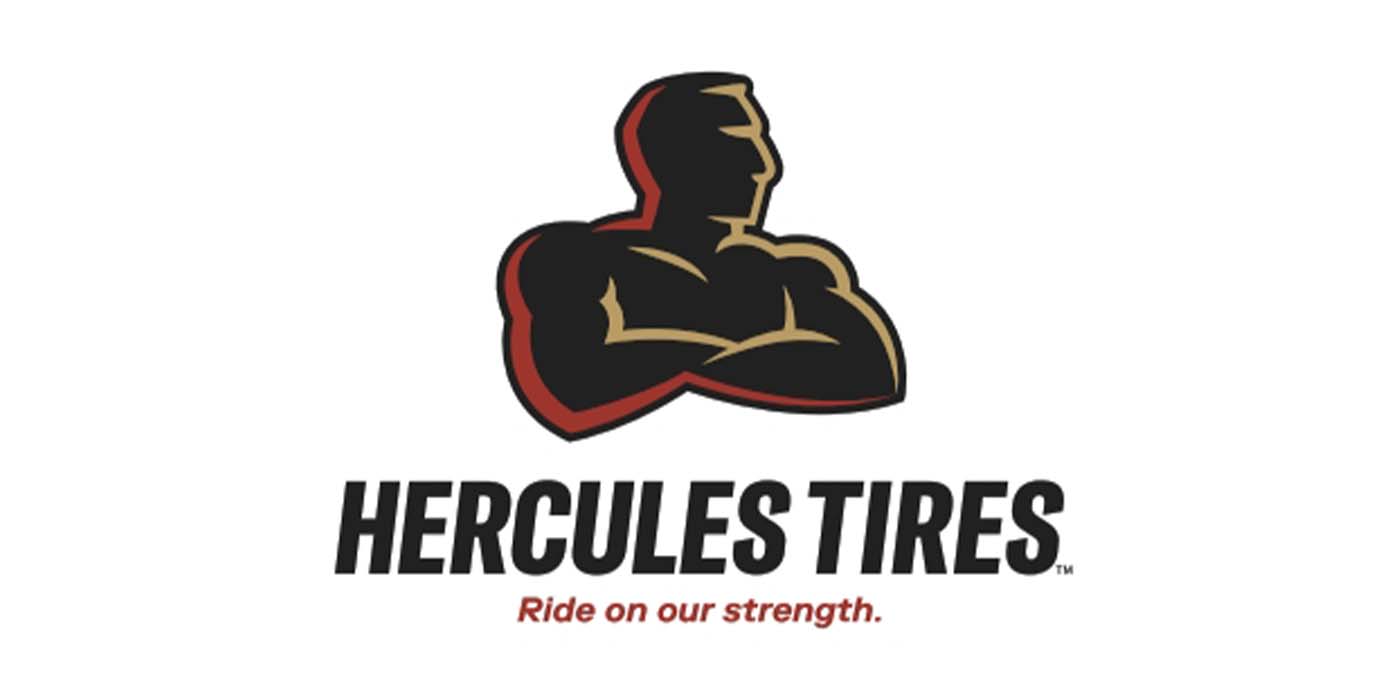By Tom Cook
As an industry, the automotive aftermarket faces tariff exposure up and down the bill of materials, with varying levels of tariffs on components, leading up to negligible – if not zero – tariffs on finished products, and there is no indication that import duties will be lifted anytime soon with Biden trade policy. Tariff mitigation options must be explored and implemented where applicable in order to reduce landed costs. In this article, we explain Foreign Trade Zones as a powerful tool that impacts two key cost drivers: lead-time and cash-flow, and in some cases even direct spend.
We’ll address the benefits separately, but first, what exactly is a Foreign Trade Zone (FTZ)?
As illustrated below, a Foreign Trade Zone is a legal entity – typically in a user-owned or approved 3PL warehouse, certified to be compliant, secure and accountable – that sits outside the U.S. Department of Commerce. Detailed product data is tracked from the exporting warehouse and routinely reported (this is where technology plays a role and clear standard operating practices are critical).
Benefits of a Free Trade Zone
Shorten lead-times and increase delivery reliability: With a foreign trade zone (FTZ) in your warehouse or in your 3PL partner’s warehouse, your imported products or components zoom directly to your premises while your competitors’ products sit at the port awaiting clearance. Not a trivial benefit in port-congested 2021. And bypassing the customs queue eliminates the need for yet more hedge inventory or safety stock.
Cash Flow: Even better, financial benefit may outweigh lead-time benefits. Pay duty only when sold, and only on product sold, thus optimizing cash flow – hang on to every inventory-related dollar as long as you can.
Direct Spend: Better yet, eliminate some duty altogether: No duty paid on scrapped product. No duty paid on product re-exported. Best of all: Rethinking your manufacturing strategy could save millions, leveraging production authority (inverted tariff benefit) – particularly applicable to commercial and heavy-duty products. Avoid tariffs on components imported into your FTZ warehouse, pay reduced (or no) tariff on the assembled machine.
Summary
The global pandemic taught us (and continues to teach us) that now is not the time to go lean with inventory; if door-to-door transport is unpredictable, just-in-time can result in missed shipments and lost customers. So how do we increase inventory without paying a huge penalty in inventory carrying costs? Leave no stone unturned when procuring, transporting, importing and warehousing inventory, and that includes asking the question, “Is it time for a Foreign Trade Zone?”
For more information, or to learn how a Foreign Trade Zone can save you time and money, visit BlueTigerIntl.com.
About the Author
Thomas Cook is managing director of Blue Tiger International (bluetigerintl.com), a premier international business consulting company on supply chain management, trade compliance, purchasing, trade and disruption management, global business and logistics. Tom was former CEO of American River International in New York and Apex Global Logistics Supply Chain Operation in LA. He has more than 35 years’ experience in assisting companies all over the world manage their import and export operations. He is a member of the New York District Export Council, sits on the boards of numerous corporations and is considered a leader in the business verticals he supports. Tom also is the director of the National Institute for World Trade (niwt.org) a 30-year-old educational and training organization, based in New York. Both Blue Tiger International and the National Institute for World Trade are strategic partners of the Department of Commerce.
Tom has authored more than 20 books on global trade and is finalizing a nine-book series titled “The Global Warrior … Advancing on the Necessary Skill Sets to Compete Effectively in Global Trade.”

